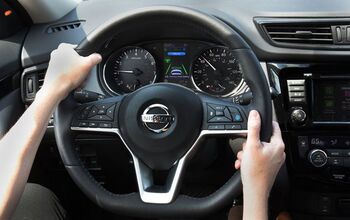This Is Why Honda Wants To Merge With Nissan

Honda executives recently shared insights into their rationale for the proposed merger with Nissan.
During a media roundtable at CES 2025 in Las Vegas Honda stressed the urgency to address mounting competition from Chinese automakers, whose dominance in EV and autonomous driving technologies has become a growing threat.
“The rise of Chinese automakers and new players has changed the car industry quite a lot," Honda CEO Toshihiro Mibe was quoted by The Verge. "We have to build up capabilities to fight with them by 2030, otherwise we’ll be beaten.”
Honda sees Nissan as a potential ally for reducing costs in developing software-defined vehicles (SDVs) and scaling EV production. “We have significant labor and development costs, and if there are operations we could share, that would be good for us,” explained Honda’s executive vice president, Noriya Kaihara.
Nissan’s large SUV lineup, including models like the Armada and Pathfinder, also appeals to Honda. With strong hybrid technology already deployed in midsize models like the CR-V and Accord, Honda is reportedly eager to adapt its powertrains to larger vehicles.
While Honda sees potential in Nissan, the latter’s financial troubles cast a shadow over the merger’s prospects. Nissan’s earnings fell 90% last year, forcing the automaker to lay off thousands of workers.
However, Honda executives see Nissan’s struggles as an opportunity. Honda’s U.S. plants are already at maximum capacity, and underutilized Nissan factories could provide the additional production capability Honda needs to meet growing demand.
“They have capacity,” noted Kaihara, hinting that Nissan’s factories could be repurposed to support Honda’s production goals. Now frame all this with the context of President-elect Donald Trump’s threats to impose tariffs on imports and everything starts to make sense.
Honda may need to rethink its production strategy if tariffs affect its vehicle and parts production hubs in Canada and Mexico, which are currently running near full capacity. Shifting production back to Japan or other regions could raise costs for Honda, potentially affecting vehicle pricing for consumers—making Nissan's capacity an attractive proposition.
The final terms of the merger, including the share transfer ratio, are expected to be determined in June 2025.
Become an AutoGuide insider. Get the latest from the automotive world first by subscribing to our newsletter here.

An experienced automotive storyteller and accomplished photographer known for engaging and insightful content. Michael also brings a wealth of technical knowledge—he was part of the Ford GT program at Multimatic, oversaw a fleet of Audi TCR race cars, ziptied Lamborghini Super Trofeo cars back together, been over the wall during the Rolex 24, and worked in the intense world of IndyCar.
More by Michael Accardi


































Comments
Join the conversation
Raise your hand if you want a "Software Defined Vehicle"? Yeah, a few fools in the back of the room. Everyone is saying "too much tech, too expensive, too complicated"...so Honda decides now's the time to triple up on tech and build rolling computers/theaters instead of quality( and affordable to own) cars.
I'm not too sure about that.